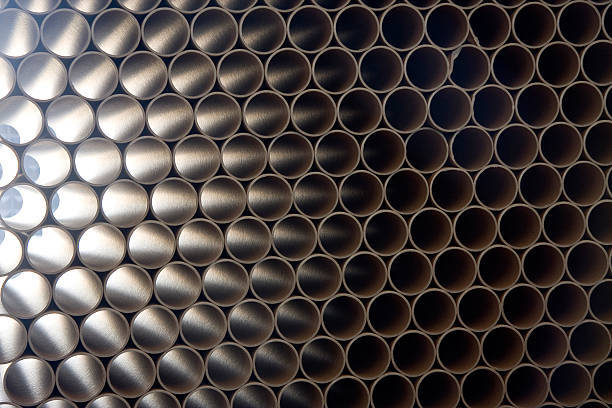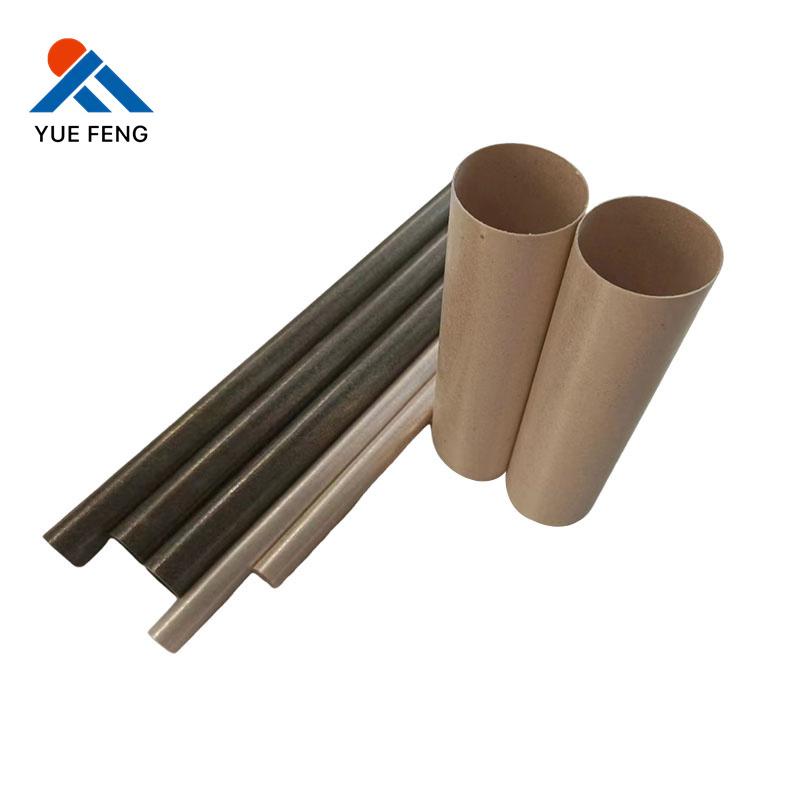How to Choose Mica Tube Sizes for Projects | Yuefeng Mica

Introduction
Selecting the correct mica tube size can make or break your project's success. Whether you're designing electrical insulation systems, heating elements, or high-temperature applications, the wrong dimensions can lead to performance failures, safety hazards, and costly rework.
This comprehensive guide will walk you through the essential factors for choosing mica tube sizes, helping you make informed decisions that ensure project success. We'll cover critical measurements, application-specific requirements, and practical selection strategies based on decades of industry experience.
Understanding Mica Tube Dimensions
The Three Critical Measurements
When specifying mica tubes, three dimensions determine your selection:
Inner Diameter (ID) represents the internal opening of the tube. This measurement directly impacts what components can fit inside and affects heat transfer characteristics. Standard inner diameters range from 2mm to 100mm, with custom sizes available for specialized applications.
Outer Diameter (OD) defines the tube's external dimensions. The difference between outer and inner diameter determines wall thickness, which directly affects mechanical strength and insulation properties. Common outer diameters span from 4mm to 120mm.
Length varies based on application requirements. Standard lengths range from 25mm to 1000mm, though custom lengths are readily available. Consider thermal expansion when selecting length for high-temperature applications.
Wall Thickness Considerations
Wall thickness equals (OD - ID) ÷ 2 and significantly impacts performance:
Thin walls (0.5-2mm): Provide better heat transfer but offer limited mechanical protection
Medium walls (2-5mm): Balance thermal performance with structural integrity
Thick walls (5mm+): Maximum protection and insulation but reduced heat transfer efficiency
Application-Specific Size Selection
Electrical Insulation Applications
For electrical insulation, prioritize dielectric strength over thermal considerations. The wall thickness must provide adequate electrical isolation based on your voltage requirements.
Low voltage applications (under 1kV) typically require minimum wall thickness of 1-2mm. This provides sufficient insulation while maintaining cost-effectiveness for consumer electronics and automotive applications.
Medium voltage systems (1-10kV) need wall thickness of 3-5mm for safety margins. Industrial equipment and power distribution systems often fall into this category.
High voltage applications (above 10kV) demand wall thickness of 5mm or greater. Power generation and transmission equipment require maximum insulation properties.
Heating Element Applications
Heating element installations require careful balance between thermal performance and mechanical protection. The inner diameter must accommodate the heating element with proper clearance for thermal expansion.
Standard clearance allows 0.5-1mm gap between heating element and tube inner diameter. This prevents binding during thermal cycling while maintaining efficient heat transfer.
High-temperature applications may require increased clearance of 1-2mm to accommodate greater thermal expansion. Consider your maximum operating temperature when calculating clearances.
Sensor Protection Applications
Temperature sensors and thermocouples require protection from harsh environments while maintaining measurement accuracy.
Thermocouple protection typically uses thin-wall tubes (0.5-1.5mm) to minimize thermal lag. The inner diameter should provide snug fit around the sensor to ensure accurate readings.
Industrial sensor applications may require thicker walls (2-4mm) for mechanical protection in harsh environments. Balance response time against durability requirements.
Environmental Considerations
Temperature Requirements
Operating temperature directly influences size selection. Mica tubes maintain dimensional stability across wide temperature ranges, but thermal expansion still affects performance.
Continuous operating temperatures up to 1000°C are achievable with proper size selection. Account for 0.8-1.2% linear expansion at maximum temperature when specifying lengths.
Thermal cycling applications require additional consideration for fatigue resistance. Select wall thickness that accommodates stress from repeated expansion and contraction.
Mechanical Stress Factors
Environmental mechanical stresses influence size requirements:
Vibration environments benefit from thicker walls that resist cracking and fatigue. Consider minimum wall thickness of 2-3mm for applications with continuous vibration.
Pressure applications require wall thickness calculations based on internal pressure and safety factors. Consult with engineers for pressure vessel applications.
Impact resistance needs vary by installation environment. Thicker walls provide better protection but increase cost and reduce heat transfer efficiency.
Standard vs Custom Sizing
Standard Size Advantages
Standard mica tube sizes offer several benefits:
Cost effectiveness stems from volume production and readily available inventory. Standard sizes typically cost 30-50% less than custom dimensions.
Quick availability means shorter lead times for project completion. Most standard sizes ship within 1-2 weeks from stock.
Proven performance comes from extensive field testing and application history. Standard sizes have established performance data for various applications.
When to Choose Custom Sizing
Custom dimensions become necessary when:
Space constraints require precise fitting in tight assemblies. Custom sizing optimizes space utilization in compact designs.
Performance optimization demands specific wall thickness or diameter ratios. Custom dimensions can maximize thermal or electrical performance.
Volume requirements justify tooling costs. Large quantity orders often make custom sizing cost-effective compared to modifying standard sizes.
Selection Process Step-by-Step
Step 1: Define Application Requirements
Start by clearly documenting your application needs:
Maximum operating temperature
Voltage requirements (if applicable)
Mechanical stress levels
Environmental conditions
Space constraints
Performance priorities
Step 2: Calculate Required Dimensions
Inner diameter calculation: Add appropriate clearance to your insert diameter. For heating elements, add 0.5-2mm depending on temperature range.
Wall thickness determination: Consider electrical, thermal, and mechanical requirements. Use the most demanding requirement to set minimum wall thickness.
Length specification: Account for thermal expansion, mounting requirements, and any length-dependent performance factors.
Step 3: Review Standard Options
Compare your calculated requirements against standard sizes. Minor adjustments to your design might allow use of standard dimensions with significant cost savings.
Step 4: Validate Selection
Consider these validation checks:
Thermal expansion calculations at maximum temperature
Electrical insulation safety margins
Mechanical strength under expected loads
Installation and maintenance accessibility
Common Sizing Mistakes to Avoid
Insufficient Thermal Clearance
Underestimating thermal expansion leads to binding and potential damage. Always calculate clearances at maximum operating temperature, not room temperature.
Overlooking Installation Requirements
Forgetting about installation access can make maintenance difficult or impossible. Consider how tubes will be installed, inspected, and replaced.
Ignoring Tolerance Stackup
Multiple component tolerances can accumulate, affecting fit and function. Consider tolerance stackup in your clearance calculations.
Choosing Based on Price Alone
While cost matters, selecting undersized tubes for cost savings often leads to failures and higher total cost of ownership.
Working with Yuefeng Mica

Technical Support Services
Yuefeng Mica provides comprehensive technical support for size selection:
Application engineering helps optimize dimensions for your specific requirements. Our engineers review your application and recommend optimal sizing.
Performance modeling predicts thermal and electrical performance for your selected dimensions. This validation prevents costly mistakes.
Custom sizing capabilities accommodate unique requirements when standard sizes don't fit. Our manufacturing flexibility supports various custom dimensions.
Quality Assurance
All Yuefeng Mica tubes undergo rigorous quality control:
Dimensional verification ensures accuracy within specified tolerances. Each tube is measured to confirm compliance with your specifications.
Material testing validates electrical and thermal properties. Regular testing maintains consistent performance standards.
Performance certification provides documentation for critical applications. Certificates support quality system requirements.
Conclusion
Choosing the right mica tube size requires careful consideration of multiple factors including application requirements, environmental conditions, and performance priorities. By following systematic selection processes and working with experienced suppliers like Yuefeng Mica, you can ensure optimal performance and reliability.
Remember that proper sizing is an investment in project success. Taking time to thoroughly analyze requirements and select appropriate dimensions prevents costly failures and ensures long-term performance.
For complex applications or when you're uncertain about sizing requirements, consult with Yuefeng Mica's technical team. Our expertise in mica tube applications can help you make the right choice for your specific project needs.








